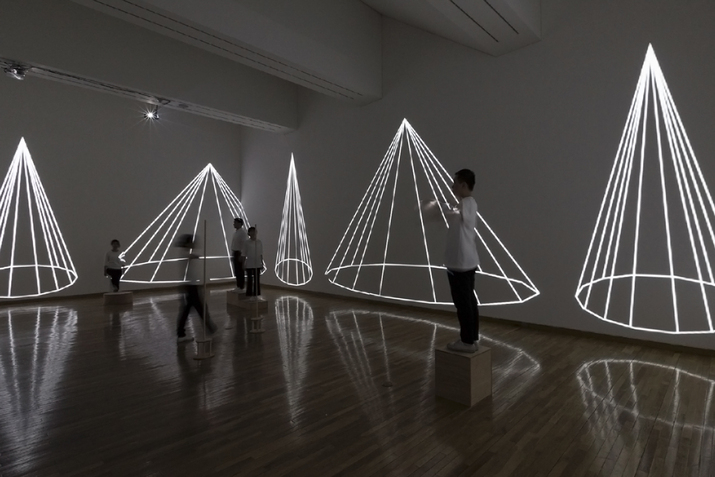-
From Current Issue
-
- Editor’s Letter Fire in the Heart
- Reviews I Gusti Ayu Kadek Murniasih
- Reviews 11th Seoul Mediacity Biennale: “One Escape at a Time”
- Dispatch Networked China
- One on One Monira Al Qadiri on Yukio Mishima
- Essays The rise of independent art spaces in pandemic-era Shanghai
- Features Tuan Andrew Nguyen
- Table of Contents
- Web Exclusives
- Archive
- Subscribe

R
E
V N
E
X
T
Just like a page yet unwritten, the group exhibition “Blank Page” held at Kumho Museum of Art showcased a variety of installations that could be interpreted in countless ways. The exhibition was highly interactive, with eight creations from six young Korean solo artists and a duo in a space spanning four floors, with the interplay between viewers and artworks being the central mechanism in reconstructing inexplicable sensations through a range of narratives. As each artwork occupied its own room, the exhibition gave off the impression that the presentation took place across eight independent art spaces. The isolation of artworks, each sitting in its own chamber, enhanced the exhibition’s focus on interaction between space and viewer.
JE BAAK, A Journey, 2015, still from single-channel video with sound: 26 min 16 sec. Courtesy the artist and Kumho Museum of Art, Seoul.
JE BAAK, A Journey, 2015, still from single-channel video with sound: 26 min 16 sec. Courtesy the artist and Kumho Museum of Art, Seoul.
Among the eight artworks, Je Baak’s single-channel video work stood out with its grand scale. Situated in the first room of the second floor, Je Baak’s A Journey (2015), which won the Grand Prix at the inaugural Hyundai Motor Group VH Award program, overwhelmed those who entered the room with its video screen that was over 17 meters in length, showing graphics that resembled those from video games. A series of seemingly unrelated objects appeared, each taking a turn on the screen. These objects include two black flags that “wave” at each other as they cross paths, and a distorted moon that constantly flicks between different viewing angles. Presented with surreal compositions, the viewer is led to question the finite and delicate nature of human life. In turn, the sense of time and space is lost, with absolute serenity filling the void.
One room over, Joon Y. Moon’s Flying (2017) was projected onto two screens, creating an interactive environment that incorporates kinetic sensors to provide visitors with a virtual experience of flying. By standing on an “X” mark placed on the floor in front of the screen, the sensors detect the body’s presence; once the program is initiated, an “O” mark appears on the screen. Then, the participant can move his or her open arms left and right to control the direction of flight. The lack of a fixed path or outcome in this work is meant to evoke the limitless possibilities of life, but the underlying concept was generic and overused, and degraded the work’s artistic and technical creativity.
One level up, the design duo Jin Dallae and Park Woohyuk’s four-channel video Pattern Exercise (2017) dominated the dark room it occupied, sparking in visitors the feeling of alienation when in an unfamiliar space. Sound bleeped endlessly, and geometric shapes—triangles, circles and rectangles—flashed across the 4.3-meter wall, remaining in view for two or three seconds at a time. Wooden stools and boxes were scattered around the room. The video, which shows various shapes and objects in thin white lines on a darkened surface, represents a simplified universe, while the constant sound of water droplets falling reminds us of rain. The mixture of quixotic animations and familiar sounds triggers the sensation of being lost in a dreamscape.
As suggested by the title “Blank Page,” the works presented in this exhibition required the active input of a viewer to bring them to completion. That is, the participants’ actions inscribed meaning on blank pages left by the eight artists. While the interactive artworks were presented in different styles and evoked different sensations, the installations had one thing in common: they took the viewer to a dimension beyond the museum’s confines.
“Blank Page” is on view at Kumho Museum of Art, Seoul, until September 10, 2017.
To read more of ArtAsiaPacific’s articles, visit our Digital Library.







